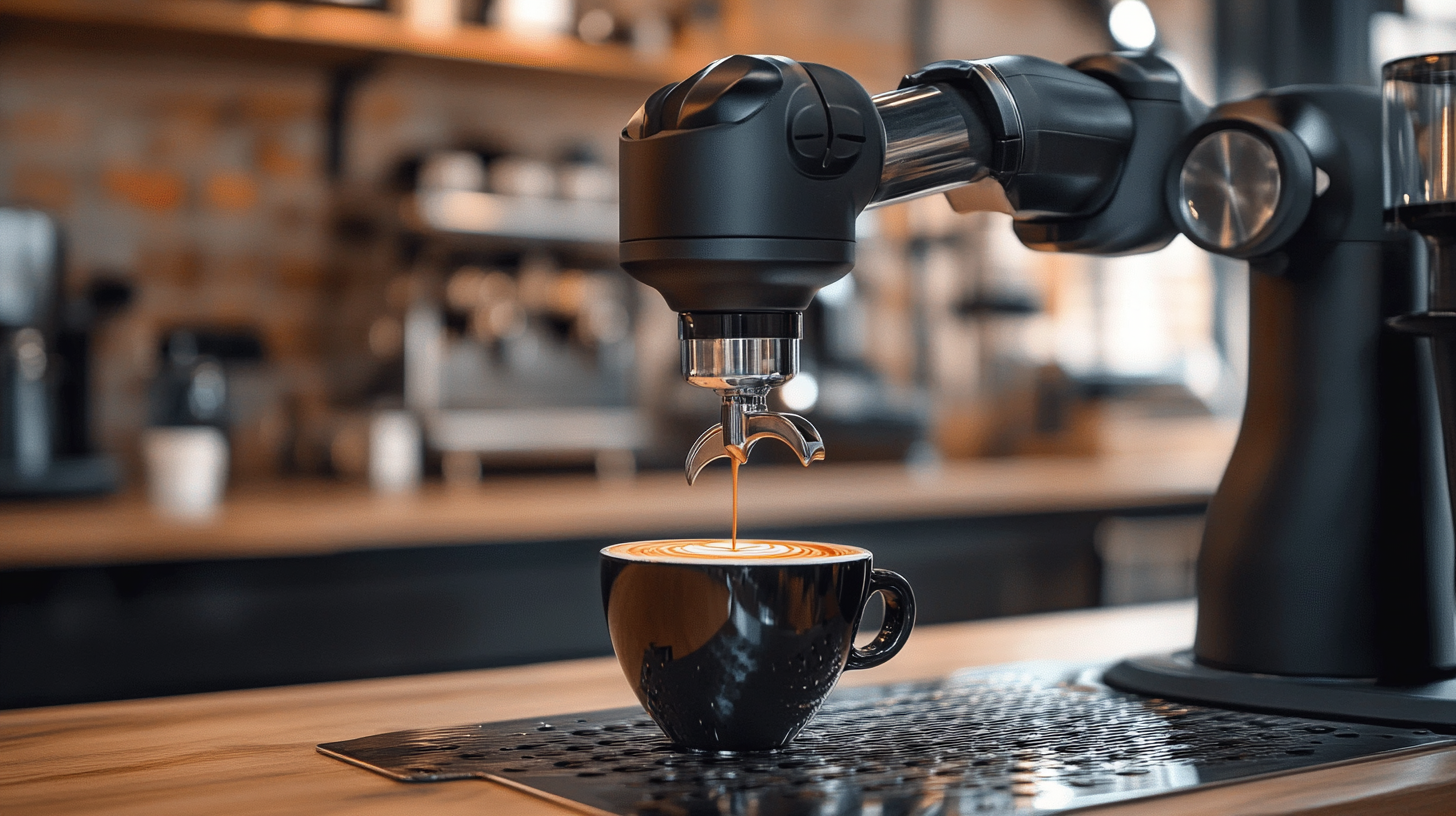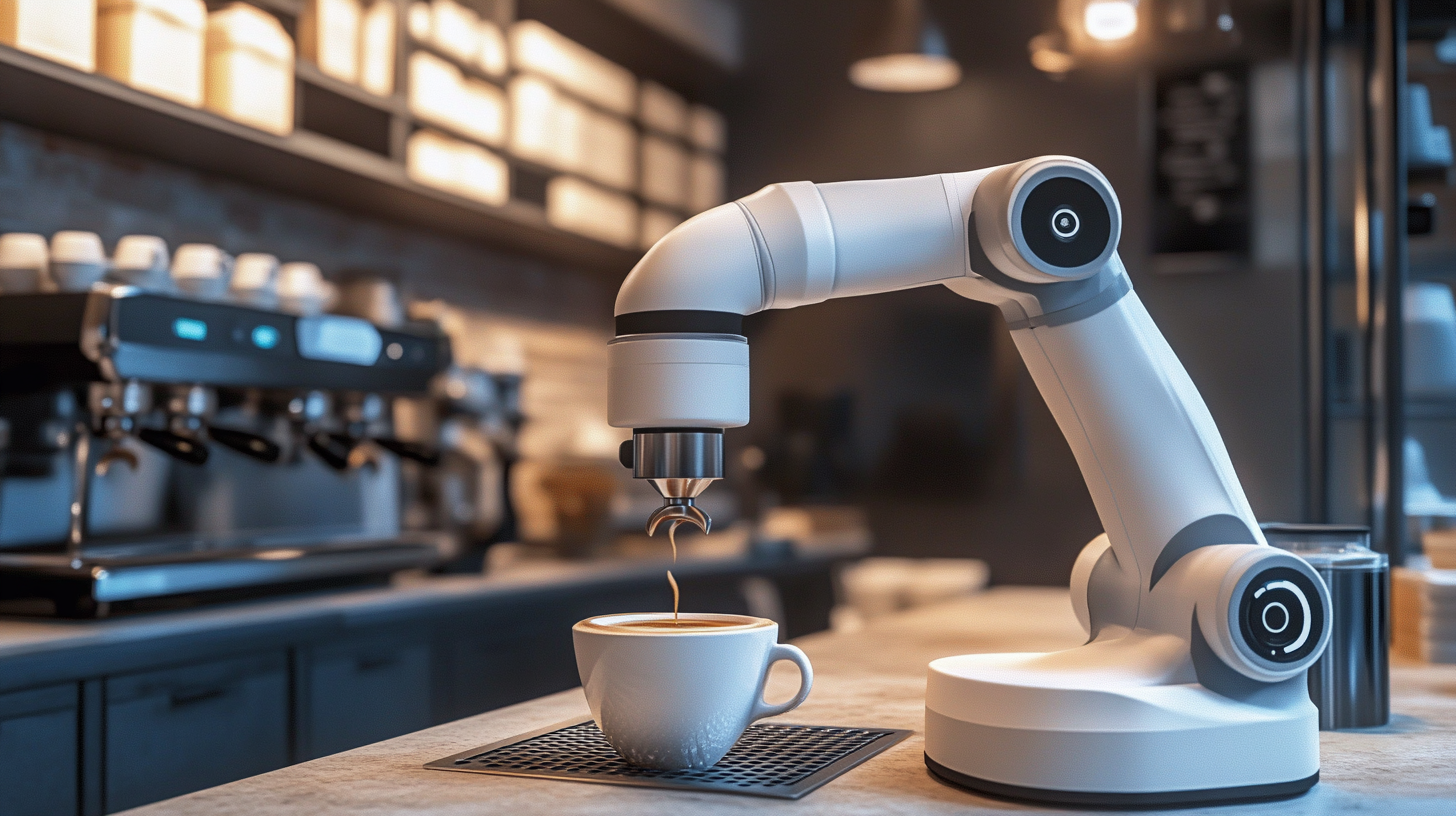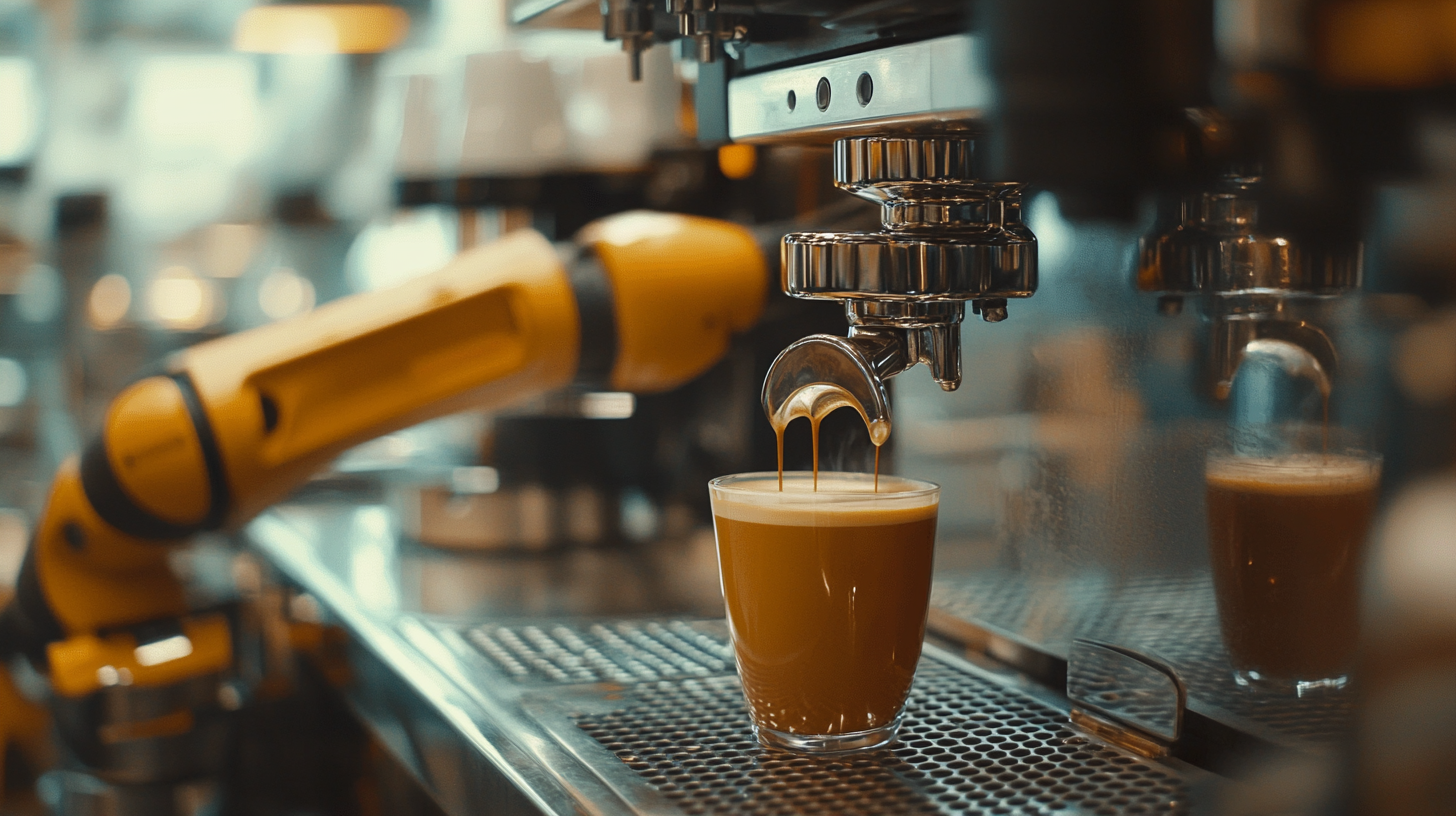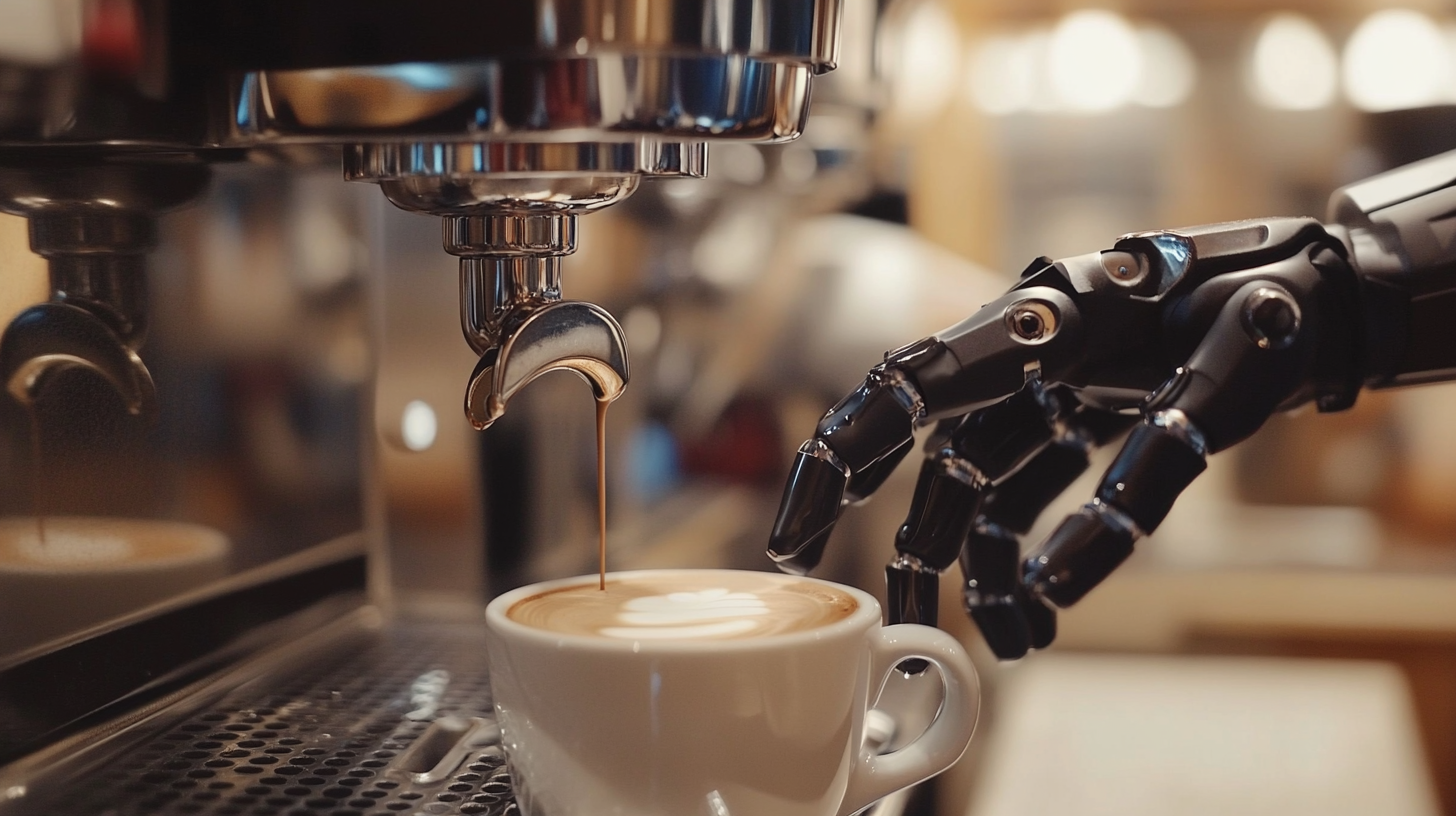Future Trends in Robot Arm Coffee Makers: A Buyer’s Guide for 2025 and Beyond
It's not information on training.
It is your training until the data is saved in October 2023.
Each ramped advancement into the universe of technology will soon extend to one into the other yesterday and, today, taking one of the most sophisticated in brewing coffee-the Robot Arm Coffee Maker. Such a fantastic device is now no futuristic dream but has become real and promises to take our coffee experience to greater heights. Automation and precision with a touch of artisanal methods through these smart machines will change the way we prepare our favorite drinks, incorporating it into a perfect product for coffee and tech enthusiasts.
So, in this blog, we will probably scratch the surface of future trends in Robot Arm Coffee Makers in terms of the features or technologies that will redefine their advancement even after the year 2025. We have much more than what promises the most cutting-edge designs installed with intelligent connectivity options; therefore, join in for this authoritative buyer's guide to offset much hype on these machines. Interesting curious minds who might just ask what the latest and greatest new capabilities have to do or consider a purchase will find that this is a perfect adventure. For example, what does the future hold for these fascinating devices, and how might it improve your daily coffee?

Trends Shaping the Future of Robot Arm Coffee Makers in Home Kitchens
With the advance of robot arm coffee makers into the domain of home kitchens, some trends appear to be coming forth with the power to completely change our morning routines. In line with certain industry predictions, the smart kitchen market is supposed to celebrate an unusual achievement and scale of $30 billion by the year 2030; thus, it will undoubtedly be an important part of the home appliances. Following some wonderful trends in kitchen technology, automation, and user experience, other leading companies, including Samsung, Siemens, Haier, Whirlpool, etc., are setting benchmarks in the industry. These coffee makers will connect to smart home systems for integration, marking these machines among those trends that deserve attention. The recent decisions taken by a few companies, including Xiaomi and especially with respect to AI, point to trends toward no hurdles in the way of connection with smart assistants. This undoubtedly enhances coffee makers' usability and even allows customization for the specific user. Customers can now place voices that tell the appliances to start with the coffee-making process-a mere statement like "Make me a latte." Also, these arms get to do more tricks like latte art, which keeps extending their versatility robotically. Companies such as 如影 (Ruying) are flaunting this kind of technology, where it showcases mechanical arms to beautifully decorate a cup while performing multiple brewing methods simultaneously. Never mind the fact that this kind of sophistication breaks into redesigning the thinking of coffee lovers; it has now become a must-have for some upscale kitchen setups. And as development progresses towards the end of 2025, the world of coffee shall soon meet with the realms of robotic convenience and culinary artistry. From smart kitchen innovation, a gaping hole in consumer interested towards automated gadgets is evident, yet quality and creativity are firmly reinstated into individual culinary experiences. Undoubtedly, these trends will set the path towards an interesting journey for kitchen technology innovations where technology marries taste.

The Impact of AI Technology on Coffee Brewing Efficiency in 2025
Grandly enough, unless AI technological interventions in robot arm coffee-making, fundamental alterations into the coffee brewing process will be witnessed by 2025. Industry reports suggest a radically altered approach toward total automation for the coming years, wherein the growth of the coffee equipment market is expected at a CAGR of 12% between 2023 and 2028 (Market Research Future). Spurring that growth is the demand for efficiency and customization in coffee operations when robotic systems can continuously adjust the brewing parameters based on real-time analysis of incoming data.
AI creates a value-add by supervision of the brewing process, through machine learning algorithms capable of adapting to human preferences and conditions around them. An exemplary instance is AI-assisted robotic arms that have been shown to learn the best brewing conditions and increase satisfaction with taste by 20% (Journal of Food Science). These variables not only improve coffee making per se but also shorten making time for each cup. In future versions of the technology, consumers will likely see a more intuitive user interface that allows for customization on specifications ranging from grind size perspective to temperature control.
Sustainability, as deliverable years roll on, is gaining topicality, and resource optimization and waste reduction are the concerns of AI-enable coffee makers. Automated systems can reduce coffee waste up to 30% compared to old brewing methods (International Coffee Organization report, 2023). With such promise of energive efficiencies and environmentally friendly attributes, AI-aided robot arm coffee makers will no doubt lead the way in developing more neutral ways to brew coffee, thus making them a palatable alternative for any modern eco-minded customer.

Economics of Robot Arm Coffee Makers: Cost vs. Benefits Analysis
In buying considerations, understanding the economics when thinking about the future of robot arm coffee makers becomes paramount for buyers. With the advent of technology and the concomitant lowering of the initial cost for these machines, the market has opened up for these sophisticated machines to a wider clientele. The consideration should not be confined to just the purchase price. A rigorous analysis of cost-to-benefit ratios indicates that long-term savings and advantages can outweigh the initial cost.
Robot arm coffee makers are useful not only for their convenience. To ensure the quality of coffee every time for true connoisseurs, such machines are designed to bring enjoyment to coffee consumers. Buying such machines in a way provides savings for buyers so they don't have to make daily stops at a coffee shop. These machines will allow for the brewing of coffee faster, and truly provide for the user with the satisfaction of enjoying a fine cup made with little effort.
Also, many of the robot arm coffee makers have intelligent features for easy customization to individual taste. This not only adds value to the machine but also plays a further role in offsetting the cost of fine coffee experience. As more and more buyers recognize the true practicality and economic advantage of these machines, the robot arm coffee makers' market will experience immense growth in the forthcoming years.

Sustainability in Coffee Production: The Role of Automated Coffee Makers
Despite all this, the increasing environmental scrutiny towards coffee industries has turned sustainability into a key consumer preference and buying criterion. On automated coffee machines as important players in promoting sustainable practices, which are now robot arm designs, a recent report released by the Specialty Coffee Association indicates that roughly 50% of coffee consumers are willing to pay much more than they otherwise would for sustainably sourced beans, inside the transformational changes towards "eco" consumption.
Robot arm coffee makers can enhance coffee production with regard to sustainability in a number of ways. First, they reduce wastage by optimizing brewing processes, ensuring that every ground bean is extracted for maximum flavor and efficiency. This leads to improved quality of the coffee while reducing the tonnes and tonnes of coffee waste produced. Moreover, these machines have added programmable functions that let users play with precision brewing parameters so that they are encouraged to use such sustainably sourced coffee beans with more conscious innovation.
Innovations in technology will also go a long way in producing appliances that will consume lesser energy. The International Coffee Organization study revealed that coffee machines that have energy-saving technologies could see their energy consumption even lower by over 30%. Robot arm coffee makers are now evolving to include recyclable materials in design, thereby lessening their ecological footprint. This is indicative of not only industry's concern over their environment but also an increasingly environmentally sensitive consumer looking forward to making informed coffee decisions.
Consumer Preferences: What Buyers Will Look for in 2025 and Beyond
In 2025 and beyond, consumer preferences in robotic coffee brewing setups will see great changes. Recently, the report by the International Coffee Organization indicated that the global coffee market augmentation prospects look bright, with an expected 2.1% increase in demand every year. This has spurred advances and innovations alike in the coffee maker market, led by robotics. The consumer preference, therefore, should head toward convenience, accuracy, and customizability.
One leading consumer trend is the desire for smart connectivity. Preliminary Statista research shows that around 47% of consumers show interest in smart appliances integrated into their home automation systems. This tendency toward automation indicates that robot arm coffee makers should be equipped with Wi-Fi or Bluetooth technologies, enabling remote control of the machines through smartphone apps. At the same time, consumers look for touch-friendly interfaces for easy operation and programming of personalized coffee-making options.
Sustainability will, in any case, also be an important factor in determining consumer preferences. The Nielsen report attests to this when it asserts that 73% of millennials will pay a premium for sustainable products. Eco-friendly designs and energy-efficient operations can also influence purchasing decisions. The conscientious consumer base of the future will likely gravitate toward robot-arm coffee makers manufactured in recyclable materials, those that demand less energy without compromising their performance, while brands that emphasize sourcing transparency and sustainability will resonate with buyers.
All in all, these consumer preferences are going to be a key view for manufacturers who want to win followers and customers in a fast-changing marketplace by 2025.
